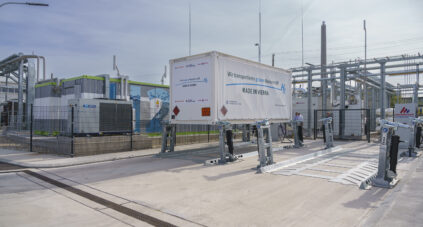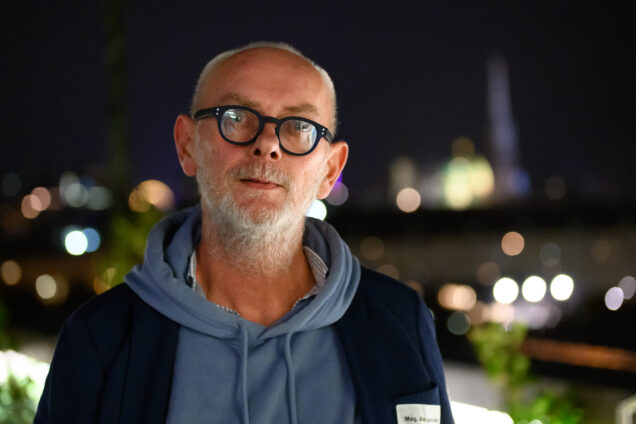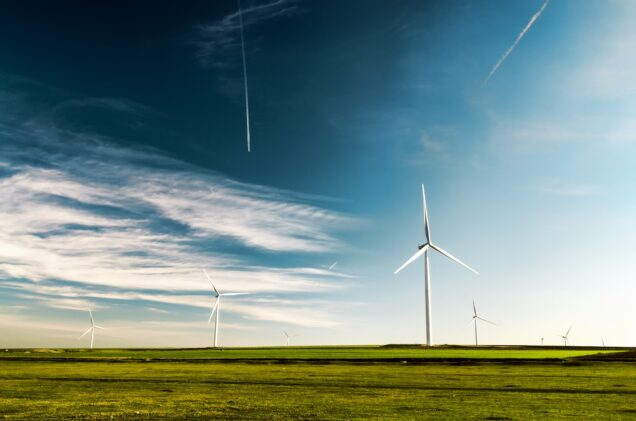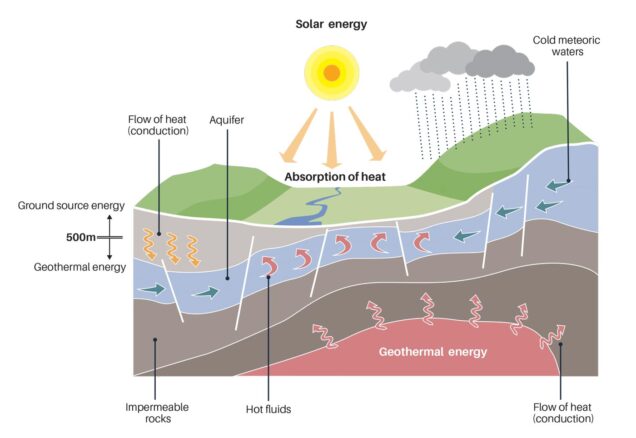

Nature contains a huge potential of sustainable energy, which we can use for us with appropriately advanced technology. You just have to access it, as these 8 sustainable forms of energy show. If some methods and scientific knowledge are extensive and already in use, others require more research and innovation and are controversial discussed. Experts agree that the combined methods of using sustainable energies can be the key to the energy transition and climate crisis. As one of the central challenges of our time and the goal to use the necessary energy from sustainable forms of energy and to completely dispense with fossil fuels in the future, we also focus on this topic at this year’s DARWIN’S CIRCLE on November 3rd at Palais Ferstel. Get your ticket here!
 Let us introduce to you one of our speakers…Alexander Juranek
Let us introduce to you one of our speakers…Alexander Juranek
Alexander Juranek is a serial entrepreneur and strategic product and business developer, with a degree from Vienna Business School. Starting his career with his 1st venture in produce retail that he successfully excited, he enjoyed a decade long corporate career at Coca-Cola, working across 30 countries on both sides of the franchise system. Thereafter he founded several food-tech startups, before going full circle back to fruits and vegetables, now though integrating backward into controlled-environment agriculture. True to his creative nature and capacity for innovation, he has been re-thinking vertical farming. With the foundation of FARM.NOW Alexander and his team democratize vertical-farming technologies, make them sustainable, affordable and as easy as eating. The grow and harvest on-demand platform they put fresh food grown sustainably in shared impact farms at the fingertips of urban B2B and B2C users.
Sustainable forms of energy can meet the growing demand for energy while preserving the environment in all its glory. Eight forms of energy are essential for this in order to tackle the energy transition:
1.Hydropower
Water is not only the elixir of life, but also an energy miracle. In hydroelectric power plants, it flows through turbines that drive a generator. This is how electricity is generated, without any CO2 emissions. It is the most efficient form of energy generation, and the energy can also be stored, allowing for flexible supply. The water is not affected during its use, it retains its quality and does not diminish. Hydroelectric power plants even contribute to the purification of rivers and serve as flood protection.
2. Solar energy
The ball of fire in the sky has been providing mankind with heat and light since its existence. Despite its great distance from the earth, the sun is an infinitely effective energy supplier. Theoretically, it generates almost 3000 times as much energy as the world needs. Solar thermal systems harness the power of the sun’s rays to power heating systems or heat water. Photovoltaic systems convert solar energy directly into electrical energy for a wide variety of appliances. The sun is also the basis for other renewable energies. Without it, there would be no wind, for example, and plants could not grow.

Wind power can still be used directly as mechanical energy, for example for water pumps or rotating machine parts. © Unsplash
3. Wind energy
Early in human history, windmills were used to grind grain, for example. Today, air currents set windmills in motion, driving rotors that in turn power generators. However, wind power can still be used directly as mechanical energy, for example for water pumps or rotating machine parts. In addition, wind turbines can be used to supply local power to remote homes, farms or small villages.
4. Biomass
The principle of biomass: to generate energy by burning renewable raw materials. The required materials can be grown specifically for this purpose, but they can also be waste products generated by plants, animals and humans. Solid biomass, such as firewood, wood pellets or cereal straw, is mainly used to generate heat. Liquid biomass, such as vegetable oils, can also become fuels, keyword biodiesel. Energy can also be generated with gases that are produced, for example, during the fermentation of biological waste.
5. Geothermal energy
Just like the sun above the earth, there is an unimaginable energy potential inside the earth itself. Starting from the hot core, heat is stored throughout the earth’s crust. In the first three kilometers below the earth’s surface alone, there would be enough energy to supply mankind for 100,000 years. With heat pumps, the heat can be used directly to heat houses or water. In power plants, geothermal energy is also converted into electricity.

The function of the manufacturing method of geothermal energy. © British Geological Survey
6. Atomic nuclear fission
For a long time a controversial topic, in the wake of the climate and energy crisis the issue of nuclear fission is once again coming to the fore. It is the technology for the large-scale generation of secondary energy by means of nuclear fission. Although its production is fundamentally more climate-friendly than fossil fuels, there are many different views of the advantages and disadvantages of nuclear power. Above all, there is controversy over safety and the handling of radioactive waste.
7. Atomic nuclear fusion
Nuclear fusion, on the other hand, represents a scientific ray of hope. This refers to nuclear reactions in which two atomic nuclei each fuse to form a new nucleus, releasing large amounts of energy in the process. Nuclear fusion reactions are the reason why the sun and all shining stars radiate energy. The advantage is that it is nearly CO2 free, but production is a major scientific challenge.
8. Hydrogen
Hydrogen can power electric motors, store energy and heat homes with the help of fuel cells. According to experts, this multi-talent even has the potential to make a decisive contribution to the energy transition. The most widespread chemical element could be the decisive piece in the puzzle for the complete abandonment of fossil energies. However, hydrogen must first be produced, which is why its manufacture is very costly and time-consuming. Production by electrolysis using surplus green electricity is particularly sustainable. Other production processes are at the research and development stage.
Be part of it! LIVE 3rd of November 2022 in Vienna
With regard to the digital conference DARWIN’S CIRCLE at 3rd of November 2022 at Palais Ferstel in the 1st district of Vienna we take great pride in the harmonious mix of attendees and speakers. Access to our events is on an invite-only basis, ans is limited to top-managers. We will discuss the most relevant topics of our time such as Artificial Intelligence (AI), the future of mobility, digital transformation, FinTech and new media next to socio-economic topics like the future of work, smart-cities, digital ethics and responsibility, sustainability and leadership.
Wir liefern die besten Stories und spannendsten Trends direkt in dein Postfach, jeden Freitag! Werde Teil der Community!